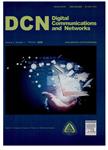Design and implementation of Ad-Hoc collaborative proxying scheme for reducing network energy waste
Design and implementation of Ad-Hoc collaborative proxying scheme for reducing network energy waste作者机构:School of Electronics Electrical Engineering and Computer Science Queen's University Belfast ECIT/CSIT- Northern Ireland Science Park Queen's RoadQueen's lsland Belfast BT3 9DT United Kingdom Electrical Engineering Department CECOS University of IT and Emerging Sciences Phase-6 Hayatabad Peshawar Pakistan
出 版 物:《Digital Communications and Networks》 (数字通信与网络(英文版))
年 卷 期:2017年第3卷第2期
页 面:118-128页
核心收录:
学科分类:0810[工学-信息与通信工程] 080904[工学-电磁场与微波技术] 0808[工学-电气工程] 0809[工学-电子科学与技术(可授工学、理学学位)] 0839[工学-网络空间安全] 08[工学] 080402[工学-测试计量技术及仪器] 0804[工学-仪器科学与技术] 0835[工学-软件工程] 081001[工学-通信与信息系统] 0812[工学-计算机科学与技术(可授工学、理学学位)]
主 题:Green networking Energy efficiency Smartphone Home gateway proxy Power measurement Universal Plug & Play
摘 要:Network devices are equipped with low power states but they are rarely activated due to their inability of maintaining network connectivity. Recently, Network Connectivity Proxy (NCP) concept has been proposed in literature as an effective mechanism to exploit full potential of low power features on network devices by impersonating their virtual presence. However, the NCP concept faces several open issues and challenges especially related to proxying of TCP connections and majority of daily used proprietary dosed-source applications. This paper presents a new approach for reducing network energy waste through intelligent collaboration among daily used devices (e.g., desktop computers, laptops, tablets, smartphones, etc). It guarantees to run applications on only and only one user device that is under active use at that specific moment. To reduce energy waste and allow idle devices to sleep, our approach also takes benefit from a light- weight home gateway proxy with very basic practically realizable functionalities. The proposed system not just reduces energy waste of fixed devices but also enables mobile devices to significantly improve their battery life. Our developed software prototypes allow devices to autonomously and seamlessly collaborate with each other without requiring any configuration or user input. Further, this paper also presents the basic performance evaluation of developed prototypes in real networking environments.



